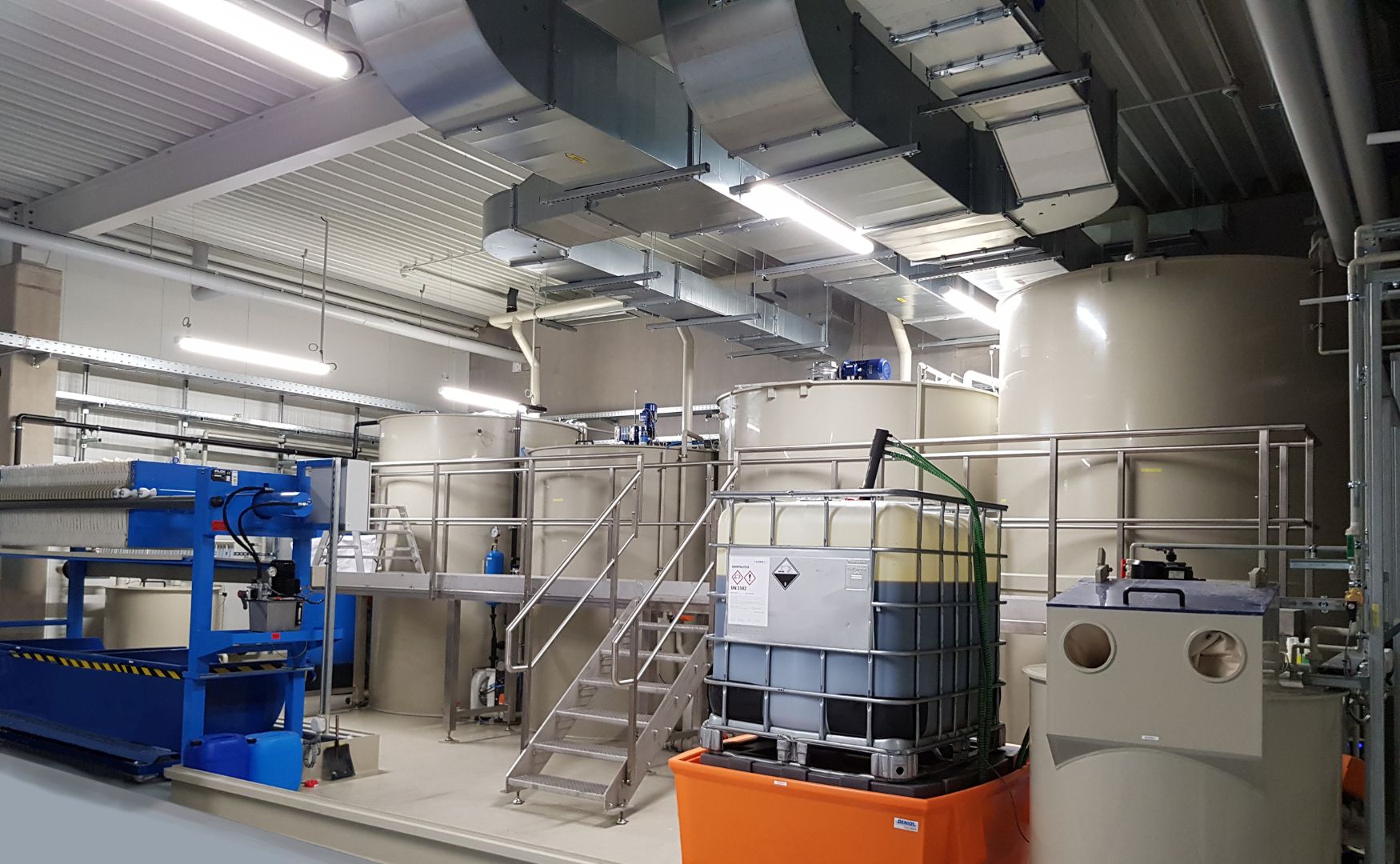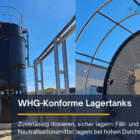Sulphide precipitation is a specialized process in industrial wastewater treatment in which dissolved heavy metal ions are converted into insoluble metal sulphides by adding sulphides. This technique is particularly efficient for the removal of toxic metals such as copper, zinc, lead or cadmium, as metal sulphides have a very low solubility and are easy to separate.
Table of contents
Technical background
Functional principle:
- In sulphidic precipitation, the wastewater is treated with sulphide compounds such as sodium sulphide (Na₂S) or iron(II) sulphate (FeSO₄). These react with the dissolved heavy metal ions in the wastewater and form metal sulphides. These sulphides are poorly soluble and precipitate as solids, which are removed by sedimentation, flotation or filtration can be removed.
- Another important aspect is pH control: the pH value is usually kept slightly alkaline (pH 8-9) to minimize the solubility of metal sulfides and maximize deposition efficiency.
Use of organosulfides:
- In practice, organosulphides (such as TMT 15) are also used, which enable controlled and targeted precipitation. These organic sulphides react selectively with heavy metal ions and are particularly effective as they form more stable complexes that are even less soluble than simple metal sulphides. TMT 15, for example, is often used to remove mercury from waste water as it forms very stable and poorly soluble mercury sulphide complexes.
Sodium bisulphite in chromate reduction:
- A special application of sulphidic precipitation is chromate reduction. In this process, sodium bisulphite (NaHSO₃) is used to reduce hexavalent chromium(chromium(VI)), which is very toxic and mobile, to trivalent chromium(chromium(III)). The reduced chromium(III) is then converted into insoluble chromium(III) hydroxide or chromium(III) sulphide by precipitation with sodium sulphide. This technique is widely used, particularly in surface treatment and electroplating, to ensure compliance with strict wastewater limits.
Areas of application
electroplating industry:
- Wastewater with high concentrations of heavy metals such as copper, nickel and zinc is produced here. Sulphide precipitation is used to precipitate these metals as metal sulphides and thus reduce the heavy metal concentrations to below the legal limits.
Chemical industry:
- In the manufacture of chemicals and products containing heavy metals or their compounds, sulphide precipitation is a common process for removing these metals safely and effectively.
Pharmaceutical industry:
- The treatment of wastewater contaminated with metals or toxic substances often requires the use of organic sulphides to safely separate particularly hazardous metals such as mercury or lead.
Surface treatment:
- In surface treatment and electroplating, chromate reduction and subsequent sulphide precipitation are used to convert and separate the highly toxic chromium(VI) compounds into a more environmentally friendly form.

Photo: Our ALMA CHEM MCW wastewater treatment plant for the precipitation and flocculation of heavy metals, AOX, hydrocarbons and cyanides
Advantages and challenges
- Efficiency: Sulphide precipitation is extremely efficient at removing toxic heavy metals, even at very low concentrations.
- Selectivity: By using organosulphides, specific metals can be removed in a targeted manner without affecting other components in the wastewater.
- Controlled reaction: Precise precipitation can be controlled by pH regulation and controlled addition of precipitants.
Challenges:
- Hydrogen sulphide formation: A potential risk during sulphide precipitation is the release of hydrogen sulphide (H₂S), a toxic gas, especially at low pH. This requires careful pH monitoring and, if necessary, gas extraction to ensure safety.
- Dosing and control: Dosing the sulphides and monitoring the reaction conditions are crucial to ensure that all heavy metals are effectively removed and at the same time no excess chemicals are released into the wastewater.
Conclusion
Sulphide precipitation is an efficient process in industrial wastewater treatment that is particularly suitable for removing heavy metals. With technologies such as chromate reduction and the use of organosulphides, even the most stringent environmental requirements can be met. However, the application of this process requires close monitoring and control to ensure maximum efficiency and safety.
For further information on our products, please feel free to contact us at any time!

Photo: Our ALMA CHEM MCW wastewater treatment plant for the precipitation and flocculation of heavy metals, AOX, hydrocarbons and cyanides








